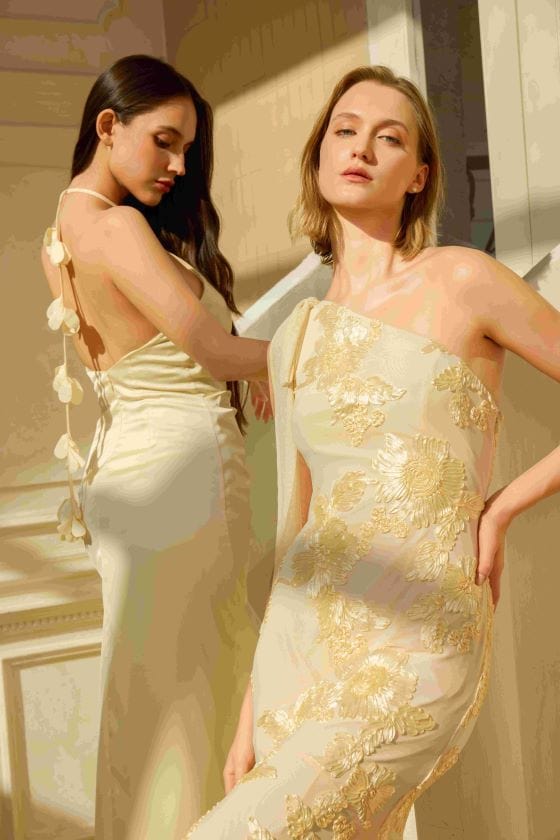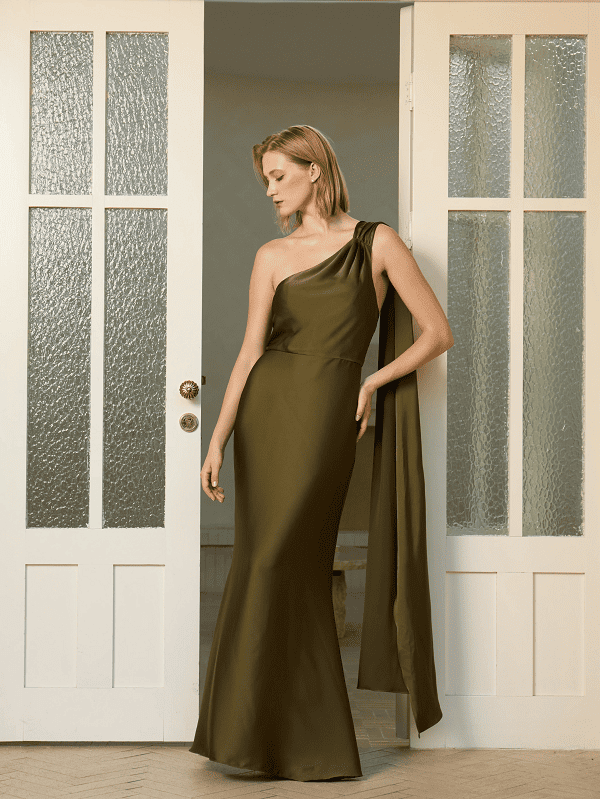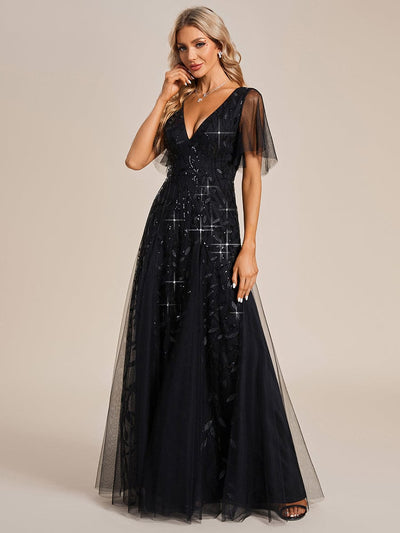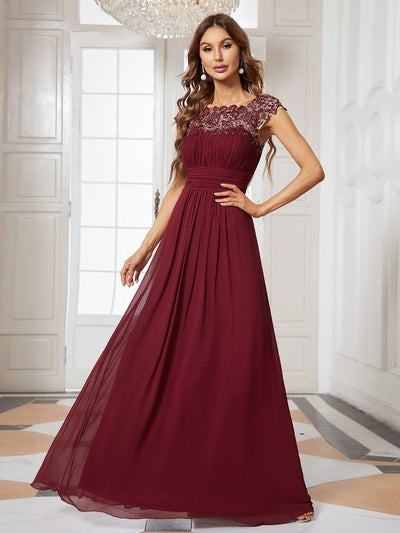What Is A Cocktail Dress? The Guide to the Dress Type
Ever gotten an invite that says "cocktail attire" and thought, "Wait, what exactly is a cocktail dress?" Don't worry, you're not alone. Lots of ladies aren't quite sure what makes a dress a "cocktail dress" or where you're supposed to wear one. That's why we're here to break it down for you. Let's do the deep-dive!
In this article:
- The History of the Cocktail Dress
The History of the Cocktail Dress
The history of the cocktail dress is an interesting journey through 20th century fashion and social trends. Here's a concise overview:
Origins (1920s):
- Emerged during Prohibition in the US
- Short, stylish dresses for clandestine cocktail parties
- Reflected the liberated "flapper" style

Golden Age (1940s-1950s):
- Popularized by Christian Dior's "New Look" in 1947
- Typically knee-length with a nipped waist
- Epitomized glamour and femininity

Evolution (1960s-1970s):
- Hemlines rose with the miniskirt trend
- More diverse styles, including pantsuits
- Reflected changing social norms and women's liberation
Modern Era (1980s-Present):
- Wide variety of styles, lengths, and materials
- Can range from classic to avant-garde
- Remains a staple for semi-formal events
What Is A Cocktail Dress?
Cocktail dresses are semi-formal garment designed for evening social events. Its key characteristics:

Length:

A cocktail dress typically falls at or slightly above the knee. But it varies in length in today’s fashion world. Cocktail dress that are mid-thigh, Tea length" (mid-calf) or slightly longer are also acceptable.
Silhouette:

Gold Sequin Bodycon Ruffled Midi
One of the most defining silhouette is A-line(often fitted at the waist and flared at the skirt). Common styles include sheath, fit-and-flare, wrap, slip, empire and bodycon.
Design:

Cocktail dresses often feature elegant and sophisticated designs and embellishments like sequins, beads, or lace. They can be an be simple or elaborate, depending on the occasion.
Necklines:

ever SIMONE dusty blue sequin midi
Neckline varies widely: strapless, sweetheart, V-neck, halter, boat neck or off-the-shoulder. The neckline of a cocktail dress is often more revealing than daywear, but not overly so.
Sleeves:

ever EMBER brown long sleeve midi
Cocktail dresses are commonly sleeveless or with cap sleeves. They can have short, three-quarter, or long sleeves. One-shoulder designs are also popular.
Materials:

Plus Size Slit Knit Bodycon Midi
Many cocktail dresses are crafted from luxurious fabrics like silk, satin, chiffon, or velvet. They may incorporate lace, tulle, or other delicate materials. Recently, designers have also incorporated more modern materials like stretch fabrics and even sustainable options.
Colour:

Pastel Yellow Drape Satin Midi
Traditionally, black is a timeless choice ("little black dress"). Today, girls embrace more colours and patterns — jewel tones, pastels, and even bold prints.
Are Cocktail Dresses Long or Short?
The classic cocktail dress length is often referred to as "knee-length" or "at the knee." This length is considered universally flattering and appropriate for most semi-formal occasions.
In recent years, the hemline of cocktail dresses has become more varied:
- Above the knee: Dresses that fall a few inches above the knee are popular, especially among younger wearers or for more casual cocktail events. These shorter styles can be playful and flirtatious while still maintaining a semi-formal look.
- Tea-length: This retro-inspired length falls between the knee and ankle, typically hitting mid-calf. Tea-length cocktail dresses have gained popularity for their vintage charm and ability to showcase statement shoes.

- High-low hemlines: These dresses feature a hemline that is shorter in the front and longer in the back, combining elements of both short and long styles.
- Maxi-length: While less common, some designers now include floor-length or ankle-length dresses in their cocktail dress collections, particularly for more formal cocktail events.
What's the Differences Between a Cocktail Dress and an Evening Gown?
| Characteristic | Cocktail Dress | Evening Gown |
| Length | Knee-length or slightly above | Floor-length or ankle-length |
| Formality | Semi-formal | Formal |
| Design and Silhouette | Variety of styles (A-line, wrap, etc.) | Structured flowing silhouettes (mermaid, etc.) |
| Materials | Silk, satin, chiffon, lighter fabrics | Silk, satin, heavier elegant fabrics |
| Colour and Patterns | Bold colours, florals, and patterns | Subdued colors, typically solid |
| Occasions | Cocktail parties; Wedding receptions; Anniversary celebrations; Gallery openings; Theater premieres; Charity events; Holiday parties; Engagement parties; |
Black-tie galas; Formal weddings; Prom nights; Upscale fundraisers; Formal ceremonies; |
| Level of Sensuality | More playful and revealing | Focus on modesty and elegance |
Can Cocktail Dresses be Floral?
Absolutely! Floral patterns are an alternative to solid-coloured dresses, allowing you play with the touch of femininity and vibrancy. They are suitable for many occasions, particularly those held during spring and summer months or in garden party settings.

Can Cocktail Dresses be Sparkly?
Yes, cocktail dresses can absolutely be sparkly! In fact, sparkly or embellished cocktail dresses are popular for many semi-formal events, especially in the evening or during festive seasons.
Sparkle in cocktail dresses can come in various forms:
- Sequins: Fully sequined dresses or dresses with sequin details can create a dazzling effect.
- Beading: Intricate beadwork can add texture and shine to a cocktail dress.
- Metallic fabrics: Materials woven with metallic threads can provide a subtle shimmer.
- Glitter: Some dresses incorporate glitter in the fabric or as an overlay for a sparkling effect.
- Rhinestones or crystals: These can be used as embellishments to add spots of sparkle to a dress.
If you’re worried about the sparkly cocktail dress would be too dressy, try wearing more simple and casual accessories so that it balances out the overall look.























































